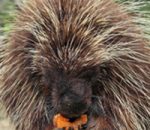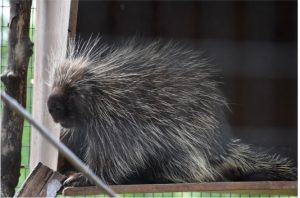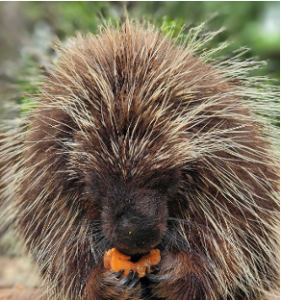Every year for one week we celebrate the amazing people that are zookeepers. A zookeeper is defined as someone who takes care of animals in a zoo setting. This is the person who interacts with the animals daily. This person does the daily cleaning and feeding but also does so much more than what most people realize.
These people are the nutritionists that help create a balanced diet for the animal. They are the veterinary assistants monitoring and helping in any type of procedure or exam. A zookeeper is the artist that designs, and constructs exhibits to look as natural as possible for the animals that live in them. This person is a behavioralist checking on the animals throughout the day to ensure they are exhibiting their normal behaviors and not anything that could be harmful to themselves or another animal. A zookeeper is a trainer, teaching the animals different behaviors to help make their lives better. An example would be standing on a scale, voluntary ultrasound, even a spin behavior so the keeper can see a full view of the animal. They are the people spreading conservation messages to help save animals from extinction. A zookeeper is the person who spends more time with the animals at the zoo than they do with their own family. For a zookeeper, the animals in their care are their family.
For this year, we as zookeepers would like to thank all those who support and help us to do the job that we love. This week doesn’t just belong to us, it belongs to those who help us. We would like to thank all the educators who spread the message of conservation to everyone who walks into the zoo. We would like to thank the financial department and upper management who keep the zoo running so that we are able to live out our dreams as keepers. Today, the world revolves around money and without them figuring out the budgets for feeding, enrichment, tools, and any materials we need, we would not be able to do our job. Without the marketing and sales team, no one would know our little zoo exists. Guests would not be able to walk around with their favorite animal as a stuffed toy or represent the zoo by purchasing a t-shirt with our logo. Without the Guest Service staff, guest would not be able to enjoy their time at the zoo without a clean environment. They would not be able to purchase food or drinks during their day.
This is a true symbiotic relationship. Without these amazing people, I wouldn’t be able to do my job. I wouldn’t be able to care for the health and well-being of so many animals. Because of these people I am able to live out my passion and my life’s work.
Written by Jessica Fronckwicz
Animal Keeper
Lehigh Valley Zoo | Schnecksville, PA


 Welcome to World Porcupine Day where we celebrate one of North America’s largest rodents, second only to the beaver. With two sharp front teeth, the porcupine can chew at the twigs and leafy plants found in the trees of Canada and Western North America. You may notice Gavin, the Lehigh Valley Zoo’s resident porcupine, chewing on items other than his diet. He is looking for items that might have salt residue on them as the North American porcupine has a particular interest in salt! When people hear the word porcupine, they may automatically think of the cartoons where quills shoot off their body. However, porcupines can’t shoot the quills off, but rather detach them when something threatening touches them.
Welcome to World Porcupine Day where we celebrate one of North America’s largest rodents, second only to the beaver. With two sharp front teeth, the porcupine can chew at the twigs and leafy plants found in the trees of Canada and Western North America. You may notice Gavin, the Lehigh Valley Zoo’s resident porcupine, chewing on items other than his diet. He is looking for items that might have salt residue on them as the North American porcupine has a particular interest in salt! When people hear the word porcupine, they may automatically think of the cartoons where quills shoot off their body. However, porcupines can’t shoot the quills off, but rather detach them when something threatening touches them. Like myself, Gavin is very food motivated and particularly enjoys his apples and bananas. Discovering an animal’s favorite food is helpful because it can help with training. Animal training is popular at the Lehigh Valley Zoo because it can provide mental stimulation and help with cooperative care. Gavin knows several behaviors, one of which is how to step on to a scale and wait for keepers to take his weight. Once he does this and the keepers have a number, Gavin gets a piece of food; hopefully it is a banana or apple! Although I think he would be okay with anything.
Like myself, Gavin is very food motivated and particularly enjoys his apples and bananas. Discovering an animal’s favorite food is helpful because it can help with training. Animal training is popular at the Lehigh Valley Zoo because it can provide mental stimulation and help with cooperative care. Gavin knows several behaviors, one of which is how to step on to a scale and wait for keepers to take his weight. Once he does this and the keepers have a number, Gavin gets a piece of food; hopefully it is a banana or apple! Although I think he would be okay with anything. 